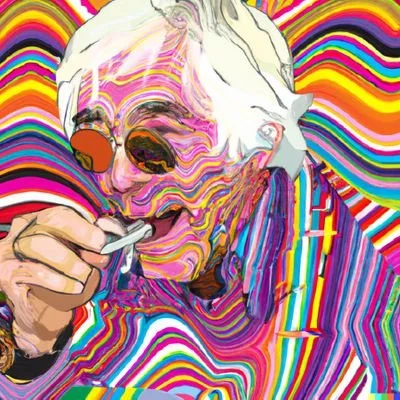In the backstage videos of music videos, you can see that camera operators are filming with small video cameras.
In the backstage scenes of TV shows, you can see that cameramen are filming with large cameras that they carry on their shoulder (or mounted on a tripod).
Comparing the quality of music videos and recordings of various shows posted on YouTube by TV channels, I do not find any difference.
It seems that small video cameras shoot just as well as large video cameras.
What is the difference?
It’s mainly the lens size. It has a wide zoom range with a servo rocker (zoom buttons) and can par focal* (focus at one zoom range and stay the same focus when zoomed out)
Then it’s a massive battery on the back and an audio kit strapped on the side. Then sometimes streaming device to live broadcast. Then you got a shoulder pad on the bottom and a big viewfinder for daylight shooting. Strip all that away the body isn’t as big and heavy as you think. So largely all operational to be used running around without needing to stop and change gear.
A few reasons, lenses are one, output options and durability are others. Many DSLRs and mirrorless cameras used for YouTube and low budget documentary don’t have the ability to output live video to a vision mixer or don’t do it in a way secure enough or high quality enough for live broadcast.
Judging by the YouTube quality isn’t a good way because they’re probably all encoded at the same rate.
Like most things technical, you tend to compromise quality for mobility
Here’s a video on TV production cameras https://youtube.com/watch?v=rYafZeiIFwA
Operation is different.
A professional camera operator isn’t going to use sub menus on a touch screen to set the white balance or focus or whatever. Especially when a retake isn’t possible.
This video answers your exact question: https://youtu.be/RkTaMyatsTo?si=1JaqDosk-5Xuu1y1 It just seems to be a very flexible option where you can record stuff that is very close or very far away.
A shoulder mounted camera with lots of mass is easier to get stable footage from, it doesn’t wobble around like a small handheld
Comparing the quality of music videos and recordings of various shows posted on YouTube by TV channels, I do not find any difference.
Maybe for you, but I generally can.
Bigger cameras have bigger sensors. This means they can process more light, amcan get more detail, and have less noise.
The gaps between large triple ccds and smaller single ccds has certainly shrunk. But if a professional has to get the best possible result in all sorts of environments while not wasting time/money, buying a proper camera that isn’t going to need as much post processing, or as many lights (especially with multiple subjects) is going to be a huge timesaver.
Kinda like photographers with a DSLR Vs an iPhone. The difference has become less, but a DSLR is going to kick an iPhones ass every time.Next up is the lenses.
If you have a small lens with a defect, more of the picture is going to travel through that defect.
If you have a large lens with a defect, a smaller amount of the picture is going to travel through that defect.
Also, lenses generally have more abberations towards the outside of the lense (like barrelling or chromatic aberration). If you can only process light from the middle of the lens, the picture is going to be so much better.
So you make big lenses, and only use the but in the middle of them.Finally it’s things like other features.
From encoding format, framerate & resolution, outputs (clean feeds, native sdi or SMPTE fibre, remote CCUs, return feeds, coms), genlock and timecode syncs. Even to things how the viewfinders, zoom and focus controls work.And by the time you are making a $100k camera with $250k lenses, it’s kinda a thing that works for sports, film, TV, whatever. There is a lot of overlap of features, and nobody wants to buy the same lens for 2 different cameras because the cameras are slightly different.
Here’s a good explainer. It’s a bit out of date but still largely true I think. The camera part of a TV camera is often the least expensive component
music video
TV shows
Back in the days, we had a saying:
If it’s on a couch, it is youtube, if it’s on a stage, it is TV.


